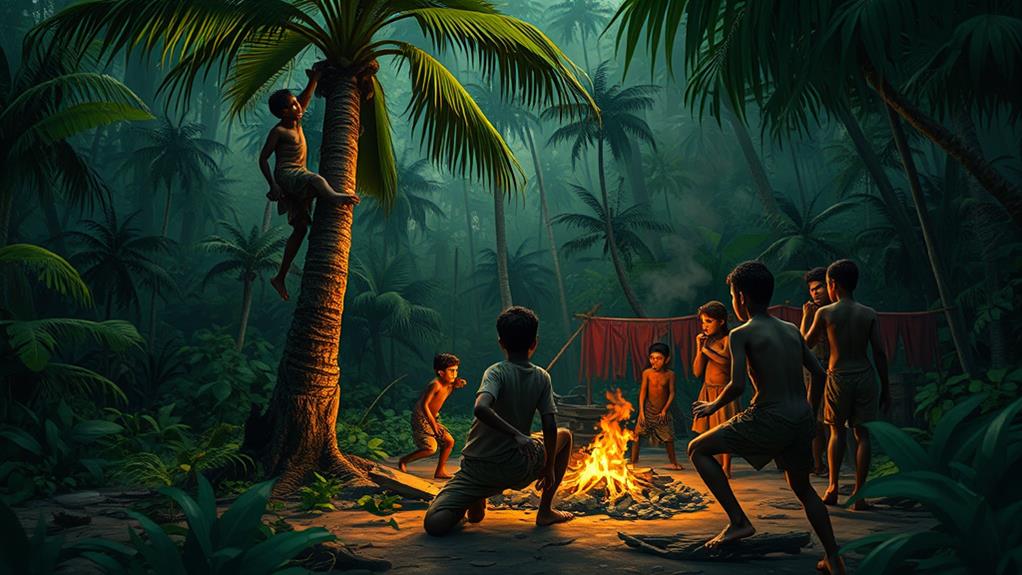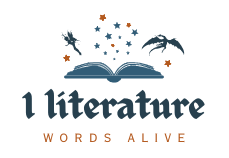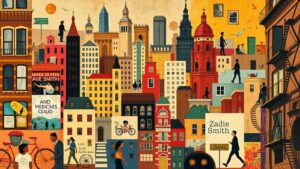In "Lord of the Flies," you observe a gripping exploration of human nature as boys struggle between civilization and savagery. Ralph represents order and democracy, while Jack embodies primal instincts and chaos. The conch shell symbolizes authority, losing its power as fear takes over. You'll see how the boys' descent into brutality reflects the inherent darkness within humanity, highlighted by the beast and the tension between leadership styles. Golding's narrative critiques societal norms and the ease with which order can crumble. There's much more to uncover about these profound themes and their implications for society.
Overview of the Novel
In William Golding's *Lord of the Flies*, a group of boys finds themselves stranded on a deserted island, sparking a struggle for survival and power. Initially, they attempt to establish a society based on order, led by Ralph, who symbolizes civilization and democratic values. However, as fear takes hold and the allure of savagery grows, the boys begin to unravel.
Jack, representing primal instincts and the hunger for power, challenges Ralph's authority, igniting a fierce struggle that reveals the dark side of human nature. This breakdown of rules is linked to the emergence of primal instincts, revealing the darker side of human nature and showcasing the fragility of moral order the breakdown of societal norms.
As the narrative progresses, the boys' descent into chaos highlights the thin veneer of civilization. The conch shell, a symbol of authority, loses its power as the boys succumb to their baser instincts, demonstrating how quickly societal structures can collapse.
The "beast" represents the fear and savagery lurking within, emphasizing the conflict between civility and the primal urges that surface in the absence of societal constraints.
Golding's critique of humanity's inherent goodness becomes evident as the characters spiral into violence and moral decay, illustrating how the struggle for power can dismantle the foundations of society itself.
Key Themes in Human Nature
In *Lord of the Flies*, you see how the inherent evil within humanity emerges when civilization crumbles. The struggle between Ralph and Jack highlights the tension between order and savagery, revealing how power can corrupt even the most innocent.
This mirrors the complexities of marriage and the challenges of communication, where misunderstandings can lead to breakdowns in relationships, much like the boys' descent into chaos.
As the boys descend into chaos, you can't help but reflect on the fragile nature of societal norms and the darkness lurking within us all, paralleling the critique of traditional views on gender roles in marriage the complexities of marriage.
Inherent Evil Within Humanity
Human nature often reveals a disturbing truth: the capacity for evil lurks within us all. In *Lord of the Flies*, Golding illustrates this inherent evil when the boys descend into savagery after societal structures collapse. The "beast" symbolizes the dark primal instincts that each boy harbors, leading to violence and chaos.
As Jack rises to power, his manipulation showcases totalitarian tendencies, exploiting the boys' fears to awaken their darker impulses.
Simon's realization about the true nature of the beast emphasizes that evil isn't an external force; it's an intrinsic part of human nature. This challenges any belief in innate goodness. You witness the tragic loss of innocence as the boys succumb to their baser instincts, culminating in Piggy's murder and the extinguishing of the signal fire, which represents a complete surrender to savagery.
Golding's narrative serves as a stark reminder of humanity's potential for darkness, urging you to confront the uncomfortable truth that, within us, lies the capacity for both good and evil.
The journey of these boys on the island reflects the struggle between civilization and the inherent evil that can emerge when order dissolves.
Civilization Versus Savagery
The struggle between civilization and savagery forms the backbone of *Lord of the Flies*, highlighting humanity's fragile nature. You see this clash through characters like Ralph and Jack. Ralph embodies civilization, advocating for order and democratic leadership, while Jack represents the pull of primal instincts and chaos.
The conch shell stands as a powerful symbol of social structures, initially promoting authority and communication. However, its destruction signals the collapse of this order.
As fear of the "beast" escalates, it reveals the boys' innate evil, showcasing their moral decay. You witness their transformation from innocent children to savage beings, illustrating Golding's belief that without societal constraints, humanity's darker impulses dominate.
The descent into savagery escalates, leading to violence and chaos, particularly seen in Piggy's tragic death and the extinguishing of the signal fire. These events symbolize the complete regression from civilization and the loss of hope for rescue.
Ultimately, *Lord of the Flies* serves as a chilling reminder of the thin veneer of civilization, urging you to reflect on the complexities of human nature and the ever-present struggle between order and chaos.
Power Dynamics and Corruption
Amidst the chaos of *Lord of the Flies*, power dynamics reveal how easily authority corrupts. You see Jack's transformation from a choirboy to a tyrant, using fear as a weapon to maintain control over the other boys. His manipulation of their fear of the beast showcases a critical strategy in his rise to power. This exploitation highlights how fear can be a potent tool for domination, turning the group towards his authoritarian rule.
The struggle between Ralph and Jack clearly illustrates the tension between democratic leadership and chaos. Ralph stands for order and civilization, while Jack embodies savagery and disorder.
Under Jack's leadership, a mob mentality develops, where individual moral compasses are overridden by group dynamics. This shift leads to horrific acts of brutality that would be unthinkable in a civilized context.
Golding's portrayal of these power dynamics acts as a cautionary tale about the potential for corruption inherent in human nature. When societal structures collapse, the dark side of humanity can emerge, revealing how quickly fear and the allure of power can lead to chaos and moral decay.
The Role of Savagery

Savagery emerges as a powerful force in *Lord of the Flies*, revealing the darker aspects of human nature. As you read, you witness how Jack's thirst for power drives the boys into chaos, illustrating how easily civilization can crumble. The "beast" becomes a symbol of the boys' inner savagery and fear, showing that the true source of evil lies within themselves, not an external monster. This struggle resonates with the courage and determination to overcome challenges faced by individuals in real life, as they navigate their own internal battles against adversity.
You see their descent into violence marked by a gradual abandonment of civilized behaviors. The brutal murder of Simon and the ruthless killing of Piggy highlight just how far they've fallen. Golding emphasizes the fragility of civilization; once societal structures vanish, the boys quickly regress to primal instincts.
Ritualistic hunting and the creation of totems like the pig's head, dubbed the Lord of the Flies, manifest their savagery and moral decay. This transformation serves as a stark reminder that human nature contains an inherent darkness, and without the constraints of civilization, the capacity for violence can overpower the desire for order.
As you reflect on these themes, consider how savagery shapes the boys' identities and the society they create.
Democracy and Leadership
In *Lord of the Flies*, Ralph's rise to leadership showcases the initial embrace of democratic ideals among the boys, highlighting their desire for order and cooperation. His election reflects a collective decision-making process that emphasizes the importance of mutual respect and collaboration. The conch shell, a powerful symbol of democratic authority, grants the right to speak during meetings, ensuring individual voices are heard.
This early display of teamwork mirrors the concept that the simple act of making the bed symbolizes discipline and order, reinforcing the need for structured leadership.
Ralph's rational leadership stands in stark contrast to Jack's authoritarian approach, which exploits fear to seize power. As Jack's faction gains strength, the decline of democratic processes becomes evident, illustrating how fragile civilization can be. You witness the unsettling shift from order to chaos, as the boys' primal instincts emerge, revealing the darker aspects of human nature.
Golding critiques leadership by showcasing this tension between democracy and tyranny. When rational thought is abandoned, the boys descend into savagery, highlighting the dire consequences of forsaking democratic values.
Ultimately, *Lord of the Flies* serves as a cautionary tale about the ease with which order can dissolve into chaos, prompting you to reflect on the nature of leadership in society.
Symbolism in the Narrative

In *Lord of the Flies*, symbols like the conch shell, the beast, and fire play vital roles in shaping the narrative.
The conch represents order and democracy, while the beast exposes the darkness within humanity, reflecting the struggles faced by many unsung trailblazers who challenged societal norms for justice and equality, such as those recognized in pioneers of social change.
Fire, on the other hand, illustrates the conflicting desires for hope and destruction, creating a powerful commentary on human nature.
Conch Shell Significance
Amidst the chaos of the island, the conch shell emerges as a powerful symbol of order and authority, uniting the boys under a shared vision of democracy. Initially, it represents their hope for a structured society, allowing them to voice their opinions and establish rules. The conch shell fosters a sense of civilization, encouraging cooperation among the boys.
However, as the narrative unfolds, its significance diminishes, paralleling the descent into savagery.
Key aspects of the conch shell's symbolism include:
- Authority: It grants the right to speak, establishing a hierarchy.
- Order: The boys gather and organize discussions, creating a semblance of governance.
- Democracy: Each boy has a chance to express his thoughts, promoting equality.
- Fragility: Its eventual destruction highlights the vulnerability of social structures.
- Chaos: The loss of the conch signals the triumph of primal instincts over civilized behavior.
Ultimately, Golding uses the conch shell to illustrate how easily order can crumble under the pressure of chaos, emphasizing the delicate balance between civilization and savagery.
The Beast Symbolism
The concept of the beast in *Lord of the Flies* serves as a profound symbol of the primal instincts lurking within humanity. Initially, the boys perceive the beast as a tangible entity, but as the story unfolds, it becomes clear that the true beast symbolizes their inherent evil and the darkness that emerges when societal norms fall away. This realization is powerfully captured in Simon's insight that "the beast is us."
Fear of the beast drives the boys towards savagery, showcasing how fear can manipulate and control individuals, leading them to commit horrific acts against each other. The pig's head, known as the "Lord of the Flies," stands as a literal representation of the beast, embodying the chaotic power of evil entrenched in the human psyche.
As the boys' understanding shifts from seeing the beast as an external threat to recognizing their inner darkness, it marks a significant transformation in the narrative. This evolution highlights the novel's exploration of human nature, illustrating how primal instincts can overcome civility, revealing the inherent evil that exists within us all.
Fire's Dual Nature
Recognizing the darkness within themselves isn't the only revelation the boys face; they also grapple with the duality of fire throughout *Lord of the Flies*.
Fire serves as a powerful symbol, embodying both hope and destruction. Initially, the signal fire reflects their desire to return to civilization and maintain social order. However, as they descend into savagery, their focus shifts away from it, showcasing the loss of their moral compass.
Consider these aspects of fire's dual nature:
- Hope for Rescue: The signal fire stands as a connection to the outside world.
- Civilization vs. Savagery: The boys' obsession with hunting leads to neglecting the fire.
- Destructive Force: When fire becomes chaotic, it consumes the island, symbolizing total breakdown.
- Fragility of Order: The ease with which they abandon the fire mirrors their decline into chaos.
- Conflict of Intentions: Fire embodies both the desire for rescue and the capacity for destruction.
Ultimately, fire illustrates how quickly social structures can crumble under the weight of savagery, highlighting the struggle between civilization and chaos.
Character Analysis
Conflict defines the character dynamics in "Lord of the Flies," showcasing the struggle between civilization and savagery. Ralph, elected as the leader, embodies the principles of order and democracy, tirelessly fighting to maintain authority amidst the chaos. However, Jack represents the darker side of human nature, driven by an innate desire for power. He manipulates and instills fear, rallying others to his savage cause, which starkly contrasts with Ralph's vision of civilized society.
This struggle is reminiscent of the collective action seen in World War II resistance movements, where individuals banded together against tyranny, showcasing the power of unity against oppression collective action in resistance movements.
Piggy stands as a symbol of intellect and reason, often marginalized and ridiculed by the others. His struggle illustrates the tension between logic and primal instincts, highlighting how easily civilization can be undermined.
On the other hand, Simon embodies inherent goodness and moral insight, but tragically becomes a victim of the group's descent into savagery and violence.
These character transformations illuminate the overarching theme of civilization versus savagery. As you observe their journeys, you witness the chilling reality of human nature, where the quest for order can quickly dissolve into chaos, exposing the fragile boundaries that separate civility from barbarism.
Power Dynamics Explored

Power dynamics play an essential role in shaping the events of *Lord of the Flies*, revealing how authority can corrupt and manipulate.
You witness Jack's rise to power as a striking example of this corruption, using fear and manipulation to dominate the other boys. This struggle for leadership between Ralph and Jack symbolizes the clash between democratic ideals and primal instincts, much like how Coates explores the complexities of race and identity in his examination of systemic racism.
Consider these key elements of power dynamics:
- Fear and Manipulation: Jack exploits the boys' fears, leading them down a dark path.
- Loss of Order: The conch shell's fading significance reflects the collapse of civilized behavior.
- Mob Mentality: Collective fears erode individual morality, showcasing the dangers of groupthink.
- Rituals of Violence: Jack's faction embraces violent rituals, highlighting moral decay.
- Corruption of Innocence: The boys' descent into savagery reveals the darker side of human nature.
These aspects illustrate how the absence of societal structure can lead to a rapid shift in power dynamics, ultimately resulting in a loss of authority and the onset of chaos.
The Fragility of Civilization
How quickly can civilization unravel when faced with fear and chaos? In *Lord of the Flies*, you witness the fragility of civilization as the boys' initial attempts at order dissolve into pandemonium. The conch shell, once a powerful symbol of authority and civilized discourse, loses its grip as fear takes hold, leading to savagery.
You see how easily societal norms erode when Jack transforms from a choirboy into a tyrant, showcasing humanity's propensity to abandon moral principles in the absence of constraints.
The boys' terror of the so-called "beast" acts as a catalyst for chaos, revealing how internal fears can disrupt social cohesion. As the narrative progresses, the ultimate murder of Piggy and the extinguishment of the signal fire mark the complete breakdown of order.
These events underscore the alarming reality that civilization is precarious, hanging by a thread in the face of primal instincts.
In this chilling exploration, Golding illustrates that when chaos reigns, the delicate structures of authority and societal norms can vanish almost overnight, leaving only the raw, unfiltered essence of savagery in their wake.
Golding's Perspective on Humanity

William Golding's *Lord of the Flies* dives deep into the darker side of human nature, revealing a chilling belief that evil lurks within us all. Through his characters and their descent into savagery, you see how the absence of civilization exposes humanity's inherently evil tendencies.
Jack's transformation from a choirboy to a ruthless leader exemplifies how easily one can succumb to primal instincts when societal rules fade away.
Consider these key elements of Golding's perspective:
- The "beast" symbolizes the internal darkness that exists within each boy.
- Ralph and Piggy represent civilization's order and rationality, clashing with chaotic instincts.
- Golding's experiences in World War II shaped his view of humanity's fragility.
- The boys' descent into violence illustrates the struggle between civility and savagery.
- Fear often reveals the darker aspects of human nature, driving individuals towards brutality.
Ultimately, Golding's narrative forces you to confront uncomfortable truths about humanity, suggesting that when stripped of societal norms, you might reveal a more sinister self.
The exploration of these themes challenges you to reflect on the nature of evil within us all.
Conclusion
In *Lord of the Flies*, you see how easily civilization can crumble under pressure. Just like in a hypothetical scenario where a group of stranded hikers devolves into chaos, the boys' descent into savagery highlights the darker side of human nature. Golding's portrayal serves as a warning: without structure and morality, even the most civilized can revert to primal instincts. Ultimately, it's a stark reminder that society's veneer is thin and fragile, easily shattered by fear and power struggles.



